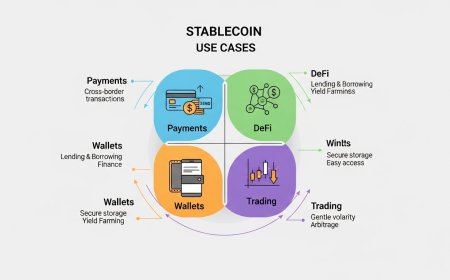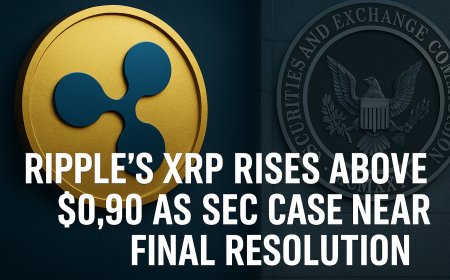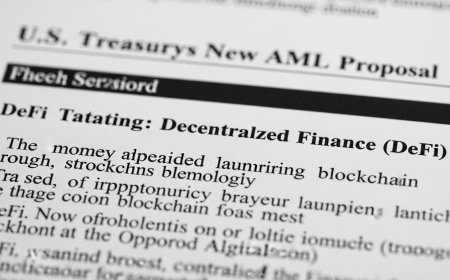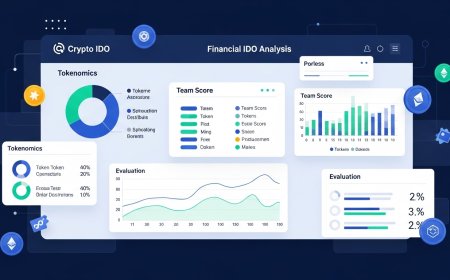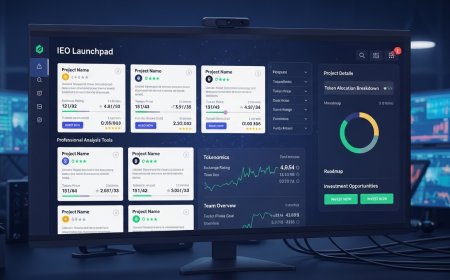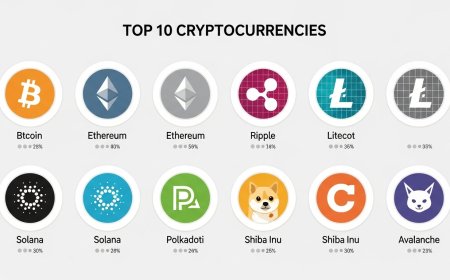How to Evaluate Crypto Private Sales: Complete Investment Guide 2025
Master the art of evaluating cryptocurrency private sales with our comprehensive investment guide. Learn proven frameworks for assessing team quality, tokenomics, market opportunity, and risk factors to make informed early-stage crypto investment decisions. Discover expert strategies for evaluating crypto private sales. Our detailed guide covers team assessment, tokenomics analysis, risk evaluation, and investment frameworks for successful early-stage cryptocurrency investing.

Understanding Private Sales
Private sales represent the earliest investment opportunity in cryptocurrency projects, typically occurring before public token offerings. These exclusive investment rounds offer significant potential returns but come with substantial risks that require thorough evaluation.
Key Characteristics of Private Sales
Exclusivity and Access: Private sales are invitation-only events with limited participation slots. Access often depends on investor credentials, network connections, or minimum investment thresholds ranging from $10,000 to $1 million or more.
Timing and Stages: Private sales usually occur during the seed or Series A equivalent stages when projects have minimal traction but compelling vision. The timing creates both opportunity and uncertainty, as products may be in early development phases.
Investment Terms: Terms typically include significant token discounts (30-80% below anticipated public prices), extended vesting schedules, and additional perks like governance rights or exclusive access to platform features.
Types of Private Sales
Strategic Rounds: Focus on partnerships and ecosystem development rather than pure capital raising. Strategic investors often provide industry expertise, network access, or technical resources beyond funding.
Institutional Rounds: Target venture capital firms, family offices, and institutional investors seeking portfolio diversification. These rounds often feature larger minimum investments and more structured legal frameworks.
Community Rounds: Smaller allocation rounds for engaged community members, influencers, or early adopters. These sales build loyalty and create grassroots marketing momentum.
Pre-Investment Research Framework
Document Collection and Review
Essential Documents Checklist:
- Whitepaper and technical documentation
- Pitch deck and executive summary
- Legal structure and jurisdiction information
- Tokenomics and distribution details
- Team backgrounds and advisory board
- Partnership agreements and MOUs
- Intellectual property documentation
- Financial projections and use of funds
- Regulatory compliance attestations
Information Verification Process
Independent Research: Cross-reference all claims against public information, industry reports, and third-party sources. Verify team credentials through LinkedIn, GitHub contributions, and previous project involvement.
Reference Checks: Contact previous investors, partners, or industry connections who have worked with the team. Request references from recent collaborations or investment rounds.
Technical Validation: For technically complex projects, engage independent developers or auditors to review code repositories, architecture decisions, and technical feasibility claims.
Team and Leadership Evaluation
Founder Assessment Criteria
Track Record Analysis: Examine previous ventures, their outcomes, and lessons learned. Look for patterns of execution, adaptability, and stakeholder treatment in past projects.
Industry Expertise: Evaluate domain knowledge, technical competency, and understanding of market dynamics. Consider whether the team's background aligns with the project's requirements.
Commitment and Alignment: Assess founder token allocation, vesting schedules, and personal investment in the project. Long vesting periods and significant founder stakes indicate commitment.
Team Composition and Skills
Technical Capabilities: Review the development team's experience with relevant technologies, previous project complexity, and contribution to open-source communities.
Business Development: Evaluate sales, marketing, and partnership experience. Strong business development capabilities are crucial for market penetration and ecosystem growth.
Advisory Quality: Assess advisor relevance, involvement level, and industry connections. Quality advisors provide strategic guidance, network access, and credibility.
Red Flags in Team Evaluation
Anonymous Teams: Be cautious of projects with anonymous leadership unless there are compelling reasons for privacy and strong technical demonstrations.
Frequent Team Changes: High turnover rates, especially in leadership positions, may indicate internal conflicts, funding issues, or strategic disagreements.
Overextended Founders: Teams involved in multiple simultaneous projects may lack focus and dedicated attention to execution.
Technology and Product Assessment
Technical Architecture Review
Scalability Analysis: Examine the proposed technical solutions for handling growth in users, transactions, and data. Consider Layer 2 solutions, sharding approaches, or other scaling strategies.
Security Framework: Review smart contract architecture, audit history, and security best practices implementation. Multi-signature wallets, time delays, and access controls are important indicators.
Interoperability: Assess compatibility with existing blockchain ecosystems, cross-chain functionality, and integration capabilities with traditional systems.
Product Development Status
Minimum Viable Product (MVP): Evaluate the current product state, user feedback incorporation, and development milestone achievement. Functional MVPs reduce execution risk significantly.
Development Roadmap: Analyze timeline feasibility, resource allocation, and milestone dependencies. Compare planned features against competitor offerings and market demands.
User Experience Design: Consider interface design, usability testing results, and accessibility features. Poor user experience can hinder adoption regardless of technical superiority.
Innovation and Differentiation
Competitive Advantages: Identify unique value propositions, proprietary technology, or first-mover advantages that distinguish the project from competitors.
Patent Portfolio: Review intellectual property protection, pending applications, and freedom to operate analysis. Strong IP portfolios can provide defensive moats.
Research and Development: Evaluate ongoing R&D investments, academic partnerships, and contributions to industry advancement.
Tokenomics Analysis
Token Utility and Value Accrual
Use Case Analysis: Examine how tokens integrate into the platform ecosystem and whether token usage is essential for core functionality rather than artificially imposed.
Value Capture Mechanisms: Identify how token value increases with platform growth through mechanisms like fee sharing, buybacks, staking rewards, or governance premiums.
Network Effects: Consider whether token adoption creates positive feedback loops that increase utility and demand as more users join the ecosystem.
Supply and Distribution Mechanics
Total Supply Analysis: Review maximum supply caps, inflation schedules, and token issuance mechanisms. Understand how new tokens enter circulation and potential dilution effects.
Distribution Fairness: Evaluate allocation percentages between team, investors, community, and ecosystem development. Balanced distributions indicate stakeholder alignment.
Vesting Schedules: Examine lock-up periods and gradual release mechanisms that prevent market dumping and align long-term incentives.
Economic Model Sustainability
Fee Structure: Analyze revenue generation through transaction fees, premium services, or ecosystem taxes. Sustainable fee models support long-term token value.
Incentive Alignment: Ensure that token holder incentives align with platform growth and user adoption rather than short-term speculation.
Monetary Policy: Review governance mechanisms for monetary policy decisions, inflation adjustments, and economic parameter changes.
Market Opportunity and Competition
Market Size and Growth Analysis
Total Addressable Market (TAM): Calculate the total market opportunity across all potential user segments and geographic regions.
Serviceable Addressable Market (SAM): Narrow the focus to markets the project can realistically address given current resources and planned expansion strategies.
Serviceable Obtainable Market (SOM): Estimate the realistic market share achievable within 3-5 years considering competitive dynamics and execution capabilities.
Competitive Landscape Assessment
Direct Competitors: Identify projects offering similar solutions and analyze their strengths, weaknesses, market positioning, and user adoption metrics.
Indirect Competitors: Consider alternative solutions that address the same user needs through different approaches, including traditional non-crypto solutions.
Competitive Positioning: Evaluate differentiation strategies, pricing advantages, and barriers to entry that protect market position.
Market Timing and Adoption
Market Readiness: Assess whether target markets are prepared for the proposed solution in terms of infrastructure, regulatory clarity, and user education.
Adoption Catalysts: Identify factors that could accelerate user adoption such as regulatory changes, technological improvements, or market events.
Seasonal Considerations: Understand cyclical patterns in the target market that might affect launch timing and growth trajectories.
Legal and Regulatory Considerations
Regulatory Compliance Framework
Jurisdiction Analysis: Evaluate the legal framework in the project's primary operating jurisdictions, including securities laws, financial regulations, and blockchain-specific legislation.
Token Classification: Understand whether tokens qualify as securities, commodities, or utilities under relevant regulations and the implications for trading and marketing.
Compliance Infrastructure: Review KYC/AML procedures, reporting mechanisms, and regulatory monitoring capabilities.
Legal Structure Assessment
Corporate Structure: Examine the choice of legal entities, jurisdictional advantages, and structural optimization for tax efficiency and regulatory compliance.
Intellectual Property Protection: Review trademark registrations, patent filings, and defensive IP strategies.
Contractual Frameworks: Analyze investment agreements, partnership contracts, and user terms of service for balanced risk allocation.
Regulatory Risk Management
Policy Change Adaptation: Consider the project's ability to adapt to evolving regulatory requirements and maintain compliance across multiple jurisdictions.
Government Relations: Evaluate engagement with regulators, industry associations, and policy development processes.
Regulatory Moats: Assess whether compliance capabilities create competitive advantages or barriers to entry for competitors.
Financial Due Diligence
Financial Health Assessment
Funding History: Review previous funding rounds, investor quality, valuation progression, and use of capital efficiency.
Cash Flow Analysis: Examine current burn rate, runway projections, and path to profitability or self-sustaining operations.
Revenue Models: Evaluate current and projected revenue streams, pricing strategies, and customer acquisition costs versus lifetime value.
Use of Funds Evaluation
Capital Allocation: Analyze planned fund deployment across development, marketing, operations, and strategic initiatives.
Milestone Funding: Consider whether funding levels align with development milestones and whether additional capital will be required.
Contingency Planning: Review backup funding strategies and scenario planning for different market conditions.
Financial Projections Analysis
Revenue Assumptions: Scrutinize user growth projections, monetization rates, and market penetration assumptions underlying financial forecasts.
Cost Structure: Evaluate operating leverage potential, scalability of cost base, and efficiency improvement opportunities.
Sensitivity Analysis: Test financial projections against various scenarios including market downturns, competitive pressure, and regulatory changes.
Risk Assessment Matrix
Technical Risks
Development Risk: Probability of technical roadmap delays, architecture flaws, or implementation challenges that could derail the project.
Security Vulnerabilities: Potential for smart contract bugs, hacking incidents, or protocol exploits that could damage platform credibility and user funds.
Scalability Limitations: Risk that technical infrastructure cannot handle projected user growth or transaction volumes.
Market and Business Risks
Market Adoption: Risk that target users do not adopt the solution as quickly or extensively as projected.
Competitive Displacement: Probability that better-funded or more established competitors could dominate the market opportunity.
Revenue Model Validation: Risk that proposed monetization strategies prove ineffective or unsustainable.
Regulatory and Legal Risks
Regulatory Crackdown: Potential for adverse regulatory actions that could limit operations or market access.
Legal Challenges: Risk of intellectual property disputes, regulatory enforcement actions, or contractual conflicts.
Jurisdictional Risk: Exposure to political instability, policy changes, or legal system unpredictability in operating jurisdictions.
Token-Specific Risks
Liquidity Risk: Potential difficulty in selling tokens due to limited trading venues or market depth.
Volatility Risk: Extreme price fluctuations that could affect portfolio stability and exit planning.
Dilution Risk: Future token issuances or unlock events that could reduce individual holdings' percentage value.
Investment Decision Framework
Scoring Methodology
Weighted Evaluation Matrix: Assign weights to different evaluation criteria based on their importance to investment success and project type.
Quantitative Metrics: Use numerical scoring for measurable factors like team experience, market size, and financial metrics.
Qualitative Assessment: Incorporate subjective evaluations of vision alignment, execution probability, and strategic fit with portfolio objectives.
Decision Criteria Thresholds
Minimum Viable Scores: Establish minimum acceptable scores for critical factors like team quality, market opportunity, and regulatory compliance.
Deal-Breaker Identification: Define non-negotiable requirements that would immediately disqualify an investment opportunity.
Investment Size Calibration: Adjust investment amounts based on risk levels, conviction strength, and portfolio allocation strategies.
Portfolio Fit Analysis
Diversification Impact: Consider how the investment affects overall portfolio risk distribution across sectors, stages, and geographic regions.
Strategic Synergies: Evaluate potential collaboration opportunities with existing portfolio companies and ecosystem benefits.
Resource Allocation: Assess the time and attention commitment required for active involvement in the investment.
Post-Investment Monitoring
Performance Tracking Metrics
Development Milestones: Monitor progress against technical roadmaps, feature releases, and partnership integrations.
User Adoption Metrics: Track active users, transaction volumes, revenue generation, and market share evolution.
Token Performance: Monitor price movements, trading volumes, exchange listings, and liquidity developments.
Ongoing Risk Management
Market Condition Monitoring: Stay informed about regulatory changes, competitive developments, and market sentiment shifts.
Team Performance: Maintain regular communication with management teams and assess execution against plans.
Portfolio Rebalancing: Adjust position sizes based on changing risk profiles and investment thesis validation.
Value Addition Opportunities
Strategic Guidance: Provide industry insights, network introductions, and strategic advice to portfolio companies.
Due Diligence Sharing: Share research and analysis with other investors to improve overall ecosystem intelligence.
Exit Planning: Develop exit strategies based on market conditions, project maturity, and portfolio objectives.
Conclusion
Successful cryptocurrency private sale investing requires systematic evaluation, disciplined risk management, and ongoing engagement with portfolio companies. The framework outlined in this guide provides a structured approach to navigating the complex landscape of early-stage crypto investments.
The key to long-term success lies in maintaining rigorous standards while remaining adaptable to the rapidly evolving cryptocurrency ecosystem. By combining thorough due diligence with strategic portfolio management, investors can capitalize on the significant opportunities presented by private sales while managing the inherent risks of early-stage investments.
Common Pitfalls to Avoid
Emotional Decision Making
FOMO-Driven Investments: Fear of missing out can lead to rushed decisions without proper due diligence. The most successful private sales often have limited time frames, but this scarcity should not override systematic evaluation processes.
Hype-Based Evaluation: Social media buzz, influencer endorsements, and community excitement do not substitute for fundamental analysis. Many failed projects generated significant initial hype before revealing underlying weaknesses.
Overconfidence in Bull Markets: During cryptocurrency bull markets, rising prices can create overconfidence in investment decisions. Maintain consistent evaluation standards regardless of market conditions.
Due Diligence Shortcuts
Insufficient Technical Review: Complex blockchain projects require technical expertise to properly evaluate. Relying solely on marketing materials without independent technical assessment increases investment risk significantly.
Incomplete Background Checks: Failing to thoroughly research team backgrounds, previous project outcomes, and potential conflicts of interest can lead to unpleasant surprises after investment.
Regulatory Blind Spots: Ignoring regulatory risks or assuming favorable regulatory treatment without proper legal analysis has resulted in significant losses for many investors.
Portfolio Management Mistakes
Concentration Risk: Investing too heavily in private sales or failing to diversify across different projects, stages, and sectors increases portfolio volatility unnecessarily.
Liquidity Planning: Private sale tokens often have extended lock-up periods. Failing to plan for liquidity needs can force premature selling at disadvantageous prices.
Exit Strategy Neglect: Not establishing clear exit criteria and strategies before investment can lead to emotional decision-making during market volatility.
Case Studies and Examples
Successful Private Sale: Layer 1 Blockchain Project
A recent Layer 1 blockchain project demonstrated the value of systematic evaluation through its private sale success. The project featured a team with extensive enterprise blockchain experience, having previously built and sold a successful infrastructure company.
Evaluation Highlights:
- Team had delivered previous blockchain products with measurable adoption
- Technical architecture solved genuine scalability problems with novel consensus mechanism
- Strong regulatory compliance framework established before token sale
- Conservative tokenomics with long founder vesting periods
- Strategic partnerships with major enterprises provided clear go-to-market path
Investment Outcome: The project achieved its technical milestones on schedule, secured major enterprise partnerships, and delivered 15x returns to private sale investors within 18 months.
Warning Signs Case Study: DeFi Protocol Failure
A DeFi protocol private sale illustrated common red flags that investors should recognize. Despite strong marketing and impressive fundraising, the project ultimately failed due to fundamental flaws identified during proper due diligence.
Red Flags Present:
- Anonymous team with no verifiable previous experience
- Unaudited smart contracts with complex financial mechanisms
- Tokenomics designed primarily to benefit early investors rather than users
- No working product despite 12 months of development claims
- Regulatory strategy consisted of jurisdiction shopping rather than compliance
Outcome: The protocol suffered multiple exploits within months of launch, resulting in complete loss of investor funds and user deposits.
Conclusion: Building Wealth Through Disciplined Crypto Private Sale Investing
Cryptocurrency private sales offer exceptional investment opportunities for those willing to apply rigorous evaluation frameworks and maintain disciplined risk management practices. The potential for life-changing returns exists, but success requires systematic approaches rather than speculation.
The most successful private sale investors combine deep industry knowledge with structured due diligence processes. They understand that thorough evaluation takes time and resources but significantly improves investment outcomes over the long term.
Key success factors include maintaining consistent evaluation standards regardless of market conditions, building strong networks for deal flow and due diligence support, and implementing proper portfolio management practices that account for the unique risks and liquidity constraints of private sale investments.
As the cryptocurrency industry continues to mature, private sale opportunities will evolve, but the fundamental principles of thorough evaluation, risk management, and strategic portfolio construction remain constant. Investors who master these disciplines position themselves to capitalize on the most promising opportunities while avoiding the numerous pitfalls that have trapped less disciplined participants.
The framework provided in this guide represents a starting point for developing your own investment processes. Adapt these methodologies to your specific investment criteria, risk tolerance, and market focus areas. Remember that successful private sale investing is a skill that improves with experience, so start with smaller positions while building your evaluation capabilities.
Most importantly, never invest more than you can afford to lose entirely. Private sale investments should represent only a portion of a well-diversified investment portfolio, and their speculative nature demands careful position sizing and risk management.
The opportunities in cryptocurrency private sales continue to expand as institutional adoption grows and new use cases emerge. Those who approach these investments with proper preparation, systematic evaluation, and disciplined execution will be best positioned to capitalize on this evolving landscape.
Disclaimer: This guide is for educational purposes only and does not constitute financial advice. Cryptocurrency investments are highly speculative and carry substantial risk of loss. Always consult with qualified financial advisors and conduct independent research before making investment decisions. Past performance does not guarantee future results.
What's Your Reaction?
 Like
0
Like
0
 Dislike
0
Dislike
0
 Love
0
Love
0
 Funny
0
Funny
0
 Angry
0
Angry
0
 Sad
0
Sad
0
 Wow
0
Wow
0















